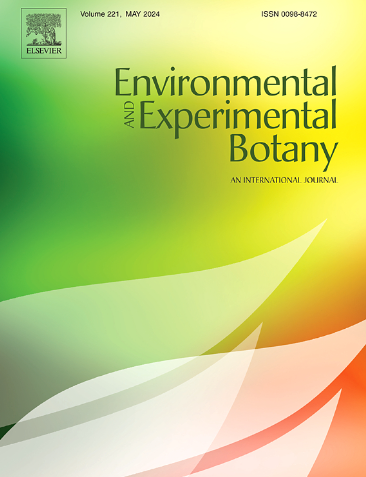Enhancing ecological restoration efficiency in antimony mining areas using arbuscular mycorrhizal fungi: Perspectives from plant physiology and transcriptomic analysis
IF 4.7
2区 生物学
Q2 ENVIRONMENTAL SCIENCES
引用次数: 0
Abstract
The high concentration of antimony (Sb) pollution poses severe challenges to ecological restoration in Sb mining areas in southwestern China. Arbuscular mycorrhizal fungi (AMF) have demonstrated considerable application potential this context; however, related research remains insufficient. This study systematically evaluated the enhancement effects and mechanisms of different AMF inoculations on ecological restoration efficiency using two pioneer plant species, Trifolium repens (Tr) and Artemisia argyi (Aa) in southwestern Sb mining areas, through plant physiology and transcriptomics analysis. The results showed that Rhizophagus intraradices (Ri) and mixed inoculation consistently exhibited superior growth-promoting effects, increasing the dry weight biomass by 1.89–6.13-fold and 1.90–7.44-fold, respectively. This was associated with increased phosphorus absorption and reduced Sb concentration in plant tissues, which mitigated environmental stress and enhanced both heavy metal tolerance and plant growth. Funneliformis mosseae (Fm) showed significant growth promotion only in soils with high pH and calcium content. Additionally, AMF inoculation increased the total Sb uptake by the plants in each pot while also activating soil nutrients, thereby improving the plant growth environment, which is a critical ecological restoration objective. Transcriptome analysis revealed that the effects of AMF on host plants varied depending on plant functionality and soil properties. In Tr, AMF regulated genes associated with signal transduction, oxidative stress response, and metal ion transport, while AMF in Aa primarily induced significant co-enrichment in photosynthetic pathways. This study substantiates the growth-promoting effects of AMF on pioneer plants and their improvement of rhizosphere soil physicochemical properties, providing a feasible strategy for ecological restoration of Sb mining areas.
利用丛枝菌根真菌提高锑矿区生态恢复效率:植物生理学和转录组学分析的视角
高浓度锑污染给西南锑矿区生态恢复带来了严峻挑战。丛枝菌根真菌(AMF)在这方面显示出相当大的应用潜力;然而,相关研究仍然不足。通过植物生理和转录组学分析,系统评价了不同AMF接种方式对西南Sb矿区两种先锋植物——三叶草(Trifolium repens, Tr)和艾草(Artemisia argyi, Aa)生态恢复效率的增强作用及其机制。结果表明,根食菌和混合接种均表现出较好的促生长效果,分别提高了干重生物量1.89 ~ 6.13倍和1.90 ~ 7.44倍。这与植物组织中磷的吸收增加和Sb浓度降低有关,从而减轻了环境胁迫,增强了植物对重金属的耐受性和生长。mosseae (Fm)仅在高pH、高钙土壤中表现出显著的促生长作用。此外,接种AMF增加了每盆植物对锑的总吸收量,同时也激活了土壤养分,从而改善了植物的生长环境,这是重要的生态修复目标。转录组分析表明,AMF对寄主植物的影响因植物功能和土壤性质而异。在Tr中,AMF调控与信号转导、氧化应激反应和金属离子转运相关的基因,而在Aa中,AMF主要诱导光合途径的显著共富集。本研究证实了AMF对先锋植物的促生长作用及其对根际土壤理化性质的改善作用,为Sb矿区生态恢复提供了可行的策略。
本文章由计算机程序翻译,如有差异,请以英文原文为准。
求助全文
约1分钟内获得全文
求助全文
来源期刊

Environmental and Experimental Botany
环境科学-环境科学
CiteScore
9.30
自引率
5.30%
发文量
342
审稿时长
26 days
期刊介绍:
Environmental and Experimental Botany (EEB) publishes research papers on the physical, chemical, biological, molecular mechanisms and processes involved in the responses of plants to their environment.
In addition to research papers, the journal includes review articles. Submission is in agreement with the Editors-in-Chief.
The Journal also publishes special issues which are built by invited guest editors and are related to the main themes of EEB.
The areas covered by the Journal include:
(1) Responses of plants to heavy metals and pollutants
(2) Plant/water interactions (salinity, drought, flooding)
(3) Responses of plants to radiations ranging from UV-B to infrared
(4) Plant/atmosphere relations (ozone, CO2 , temperature)
(5) Global change impacts on plant ecophysiology
(6) Biotic interactions involving environmental factors.
 求助内容:
求助内容: 应助结果提醒方式:
应助结果提醒方式:


